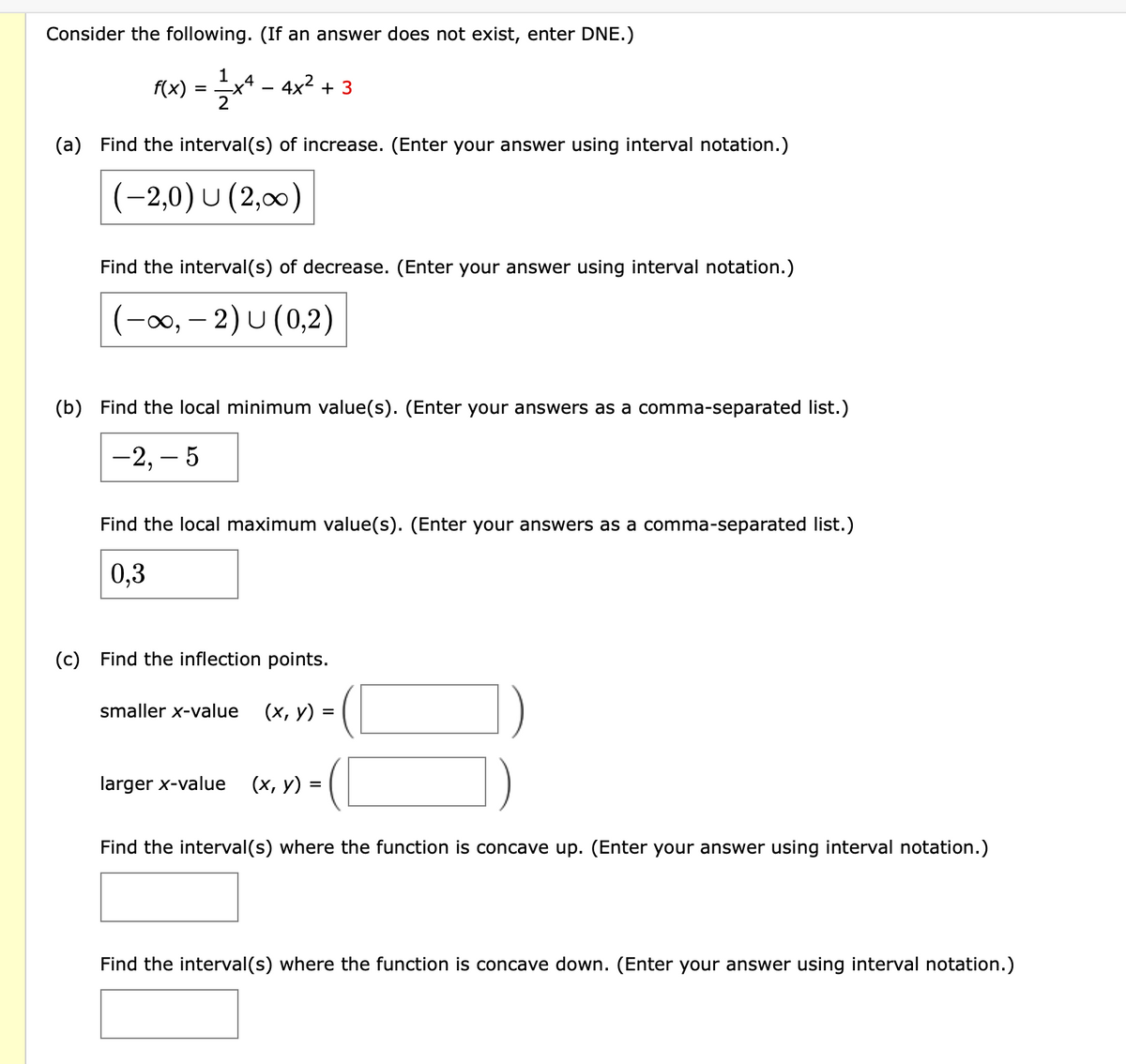Consider the following. (If an answer does not exist, enter DNE.) f(x) = x* - 4x2 + 3 (a) Find the interval(s) of increase. (Enter your answer using interval notation.) (-2,0) U (2,00)
Consider the following. (If an answer does not exist, enter DNE.) f(x) = x* - 4x2 + 3 (a) Find the interval(s) of increase. (Enter your answer using interval notation.) (-2,0) U (2,00)
Functions and Change: A Modeling Approach to College Algebra (MindTap Course List)
6th Edition
ISBN:9781337111348
Author:Bruce Crauder, Benny Evans, Alan Noell
Publisher:Bruce Crauder, Benny Evans, Alan Noell
Chapter2: Graphical And Tabular Analysis
Section2.4: Solving Nonlinear Equations
Problem 27E: Water Flea F. E Smith has reported on population growth of the water flea. In one experiment, he...
Related questions
Question
Pls help ASAP.

Transcribed Image Text:Consider the following. (If an answer does not exist, enter DNE.)
1
f(x)
** - 4x? + 3
(a) Find the interval(s) of increase. (Enter your answer using interval notation.)
(-2,0) U (2,00)
Find the interval(s) of decrease. (Enter your answer using interval notation.)
(-00, – 2) U (0,2)
(b) Find the local minimum value(s). (Enter your answers as a comma-separated list.)
-2, – 5
Find the local maximum value(s). (Enter your answers as a comma-separated list.)
0,3
(c)
Find the inflection points.
smaller x-value
(х, у) %3
larger x-value
(х, у) %3
Find the interval(s) where the function is concave up. (Enter your answer using interval notation.)
Find the interval(s) where the function is concave down. (Enter your answer using interval notation.)
Expert Solution
This question has been solved!
Explore an expertly crafted, step-by-step solution for a thorough understanding of key concepts.
Step by step
Solved in 5 steps

Recommended textbooks for you

Functions and Change: A Modeling Approach to Coll…
Algebra
ISBN:
9781337111348
Author:
Bruce Crauder, Benny Evans, Alan Noell
Publisher:
Cengage Learning


Algebra & Trigonometry with Analytic Geometry
Algebra
ISBN:
9781133382119
Author:
Swokowski
Publisher:
Cengage

Functions and Change: A Modeling Approach to Coll…
Algebra
ISBN:
9781337111348
Author:
Bruce Crauder, Benny Evans, Alan Noell
Publisher:
Cengage Learning


Algebra & Trigonometry with Analytic Geometry
Algebra
ISBN:
9781133382119
Author:
Swokowski
Publisher:
Cengage